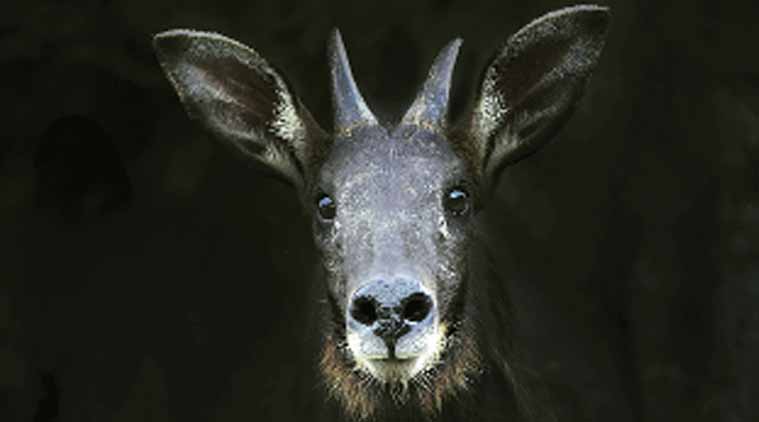- India
- International
Goat Pox behind mass deaths of Serows in Mizoram: Experts
Goat pox is caused by the Capripox Virus which can be found in potential hosts such as goats, sheep and cows.
 Serow is the state animal of Mizoram (Source: Reuters)
Serow is the state animal of Mizoram (Source: Reuters)
A disease called Goat Pox is behind the mass deaths of Serows, a wild goat-antelope animal that is Mizoram’s state animal and a Schedule-1 protected species under India’s Wildlife Protection Act, according to veterinary experts who warn “Serows in Mizoram are under threat of extinction” and that the disease is zoonotic, meaning it can also spread to humans.
In an article published in the Vanglaini newspaper on Tuesday, wildlife health expert Dr Lallianpuii Kawlni and pharmacology and toxicology expert Dr C Lalchhandama said there are at least 50 known Serow deaths so far, and more are likely to have died undetected in the wild.
[related-post]
“Investigations into the cause of Serow deaths have shown that Goat Pox is the cause, and further studies are underway…. Goats and Serows are closely-related species, and there is a high probability that the current outbreak originated and spread from goats,” wrote the wildlife conservationist duo who are currently Research Fellows at the College of Veterinary Sciences and Animal Husbandry in Selesih near Aizawl, where the virus which causes Goat Pox — capripox — was detected in laboratory tests. The college is an affiliate of the Central Agricultural University in Imphal.
Goat pox is caused by the Capripox Virus, they said, which can be found in potential hosts such as goats, sheep and cows, and that although India is a known endemic region for the virus, there have been no recorded cases of an outbreak in Mizoram.
Talking to The Indian Express, Dr Kawlni explained, “This means the current outbreak is the first exposure, and chances are that this will lead to a huge mortality rate. It is a very serious issue, and it needs to be taken more seriously. A state of emergency should have been declared as early as April, when the first carcasses were found.”

As reported earlier, it was in August that Mizoram’s forest department was put on alert after social media became rife with pictures and reports that Serows had been found either dead or barely alive with painful-looking lesions all over their bodies.
Forest Department officials had then said the semi-decayed carcasses of at least 10 Serows were found with what appear to be exacerbated skin disease over the past five months in various regions of the state and that the first sightings had been in April, when officials found four Serow carcasses near Serhmun near Kawrthah town, Mamit district, with the same kinds of outward appearances.
Forest officials had initially believed the deaths were caused by sarcoptic mange, a skin disease caused by a particular kind of mites, and that this probably lessened their ability to forage for food and weakened them gradually over several months. Further investigation revealed as many as 28 Serows had been found dead or too weak to flee from humans who killed them for their meat. Dr Kawlni says Sarcoptic Mange could have been a secondary infection but was most likely not the fatal one.
But in mid-September, state Forest Minister Lalrinmawia Ralte said experts would likely take between two and three weeks more to isolate samples and determine what caused the mysterious deaths, but hinted the wild victims were infected by a deadly virus.
Apr 26: Latest News
- 01
- 02
- 03
- 04
- 05







































